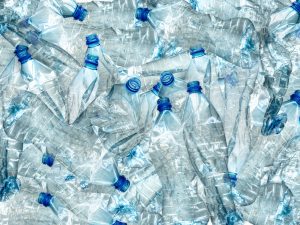
New solvent-based recycling process could boost multilayer plastic recycling rates
Canadian Plastics
Recycling Research & DevelopmentUniversity of Wisconsin–Madison engineers have pioneered a method for reclaiming the polymers in multilayer plastic materials using solvents, a technique called Solvent-Targeted Recovery and Precipitation (STRAP) processing.

Photo Credit: Roman Milert/Adobe Stock
Multilayer plastic materials are widespread in food and medical supply packaging but, due to challenges in separating the layers, they’re not widespread when it comes to being recycled. as a recycling material.
Until now, perhaps. Researchers at the University of Wisconsin–Madison have now developed a method for reclaiming the polymers in multilayer plastic materials using solvents, a technique called Solvent-Targeted Recovery and Precipitation (STRAP) processing.
By using a series of solvent washes guided by thermodynamic calculations of polymer solubility, UW–Madison professors of chemical and biological engineering George Huber and Reid Van Lehn and their students used the STRAP process to separate the polymers in a commercial plastic composed of common layering materials polyethylene, ethylene vinyl alcohol, and PET. The separated polymers appear chemically like those used to make the original film.
The team hopes to use the recovered polymers to create new plastic materials, demonstrating that the process can help close the recycling loop. It could allow multilayer-plastic manufacturers to recover the 40 per cent of plastic waste produced during the production and packaging processes.
The goal is to eventually develop a computational system that will allow researchers to find solvent combinations to recycle all sorts of multilayer plastics. The team also hopes to look at the environmental impact of the solvents it uses and establish a database of green solvents that will allow them to better balance the efficacy, cost and environmental impact of various solvent systems.
“We’ve demonstrated this with one multilayer plastic,” Huber said. “We need to try other multilayer plastics and we need to scale this technology.”
As the complexity of the multilayer plastics increases, so does the difficulty of identifying solvents that can dissolve each polymer. That’s why STRAP relies on a computational approach used by Van Lehn called the Conductor-like Screening Model for Realistic Solvents (COSMO-RS) to guide the process: COSMO-RS can calculate the solubility of target polymers in solvent mixtures at varying temperatures, narrowing down the number of potential solvents that could dissolve a polymer; the team can then experimentally explore the candidate solvents.
The team is continuing its research on STRAP processing through the newly established Multi-University Center on Chemical Upcycling of Waste Plastics, directed by Huber. Researchers in the US$12.5 million U.S. Department of Energy-funded centre are investigating several chemical pathways for recovering and recycling polymers.
Source: University of Wisconsin–Madison
